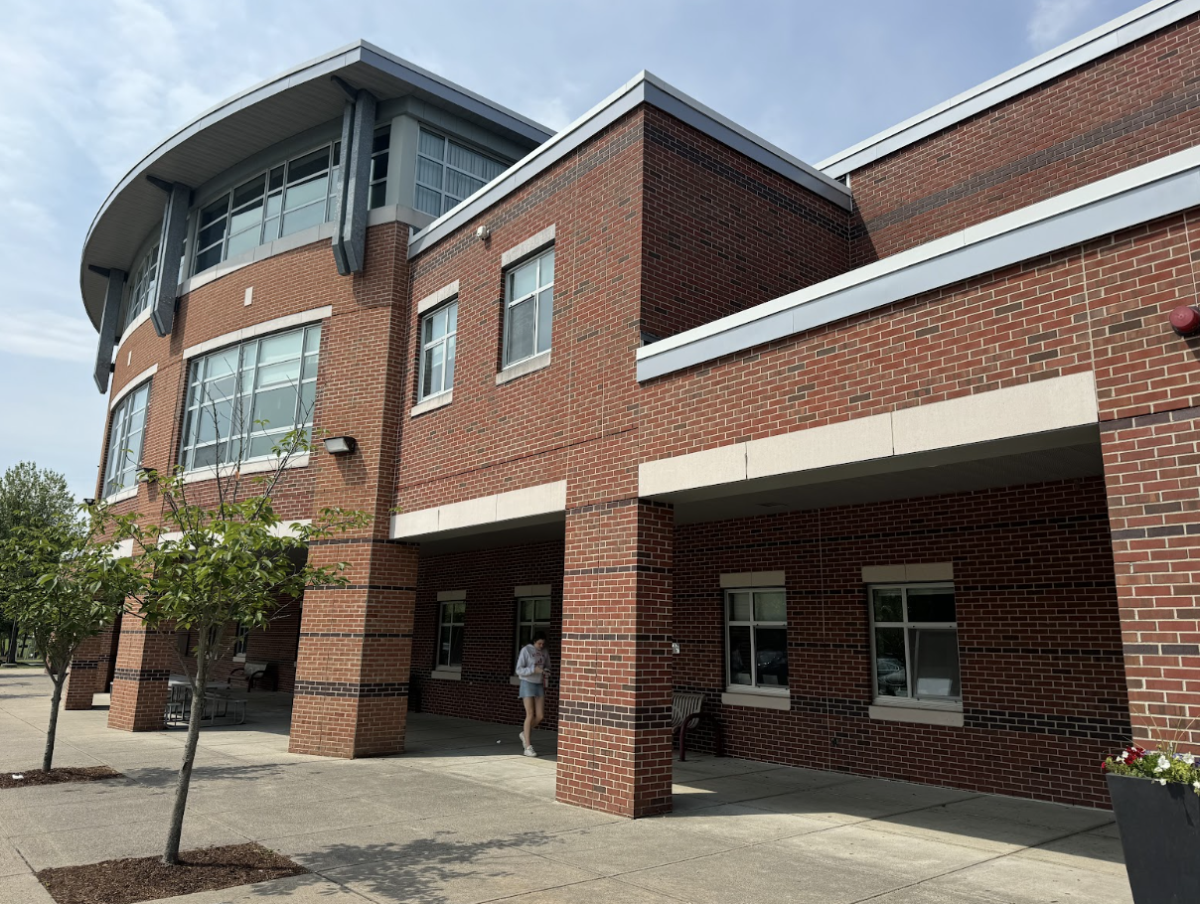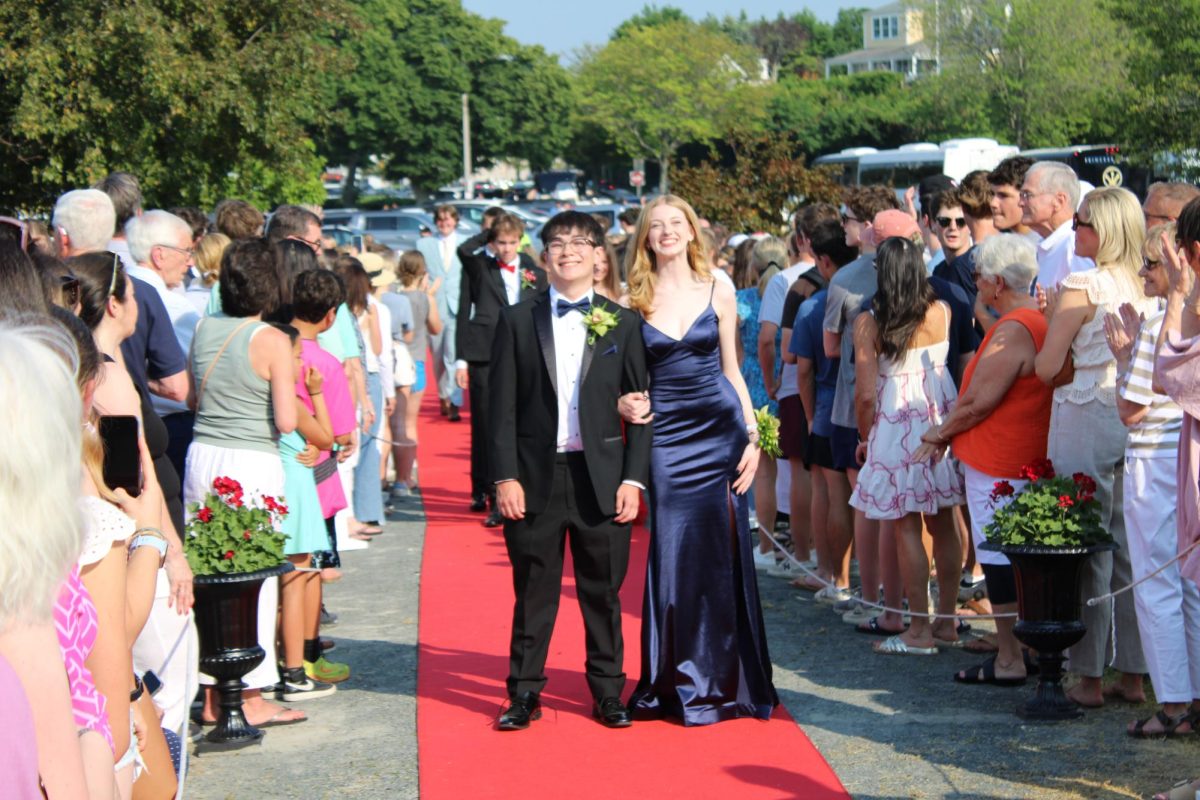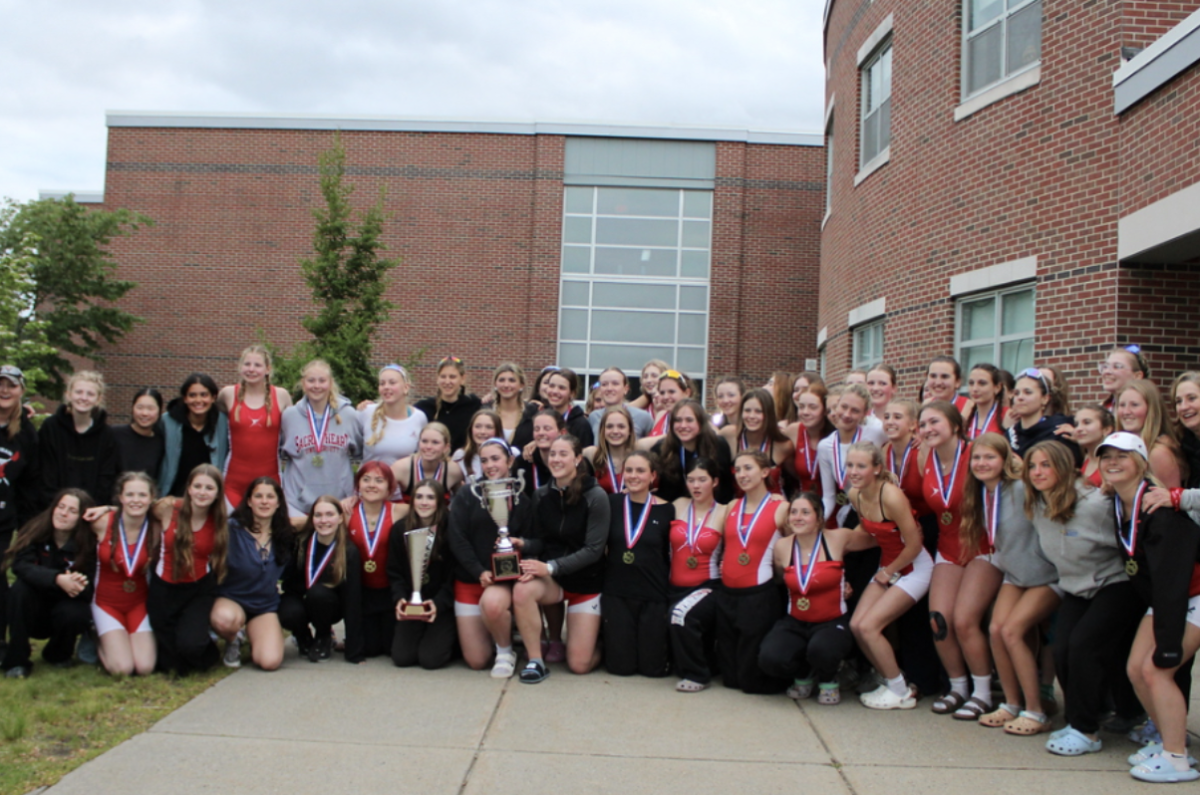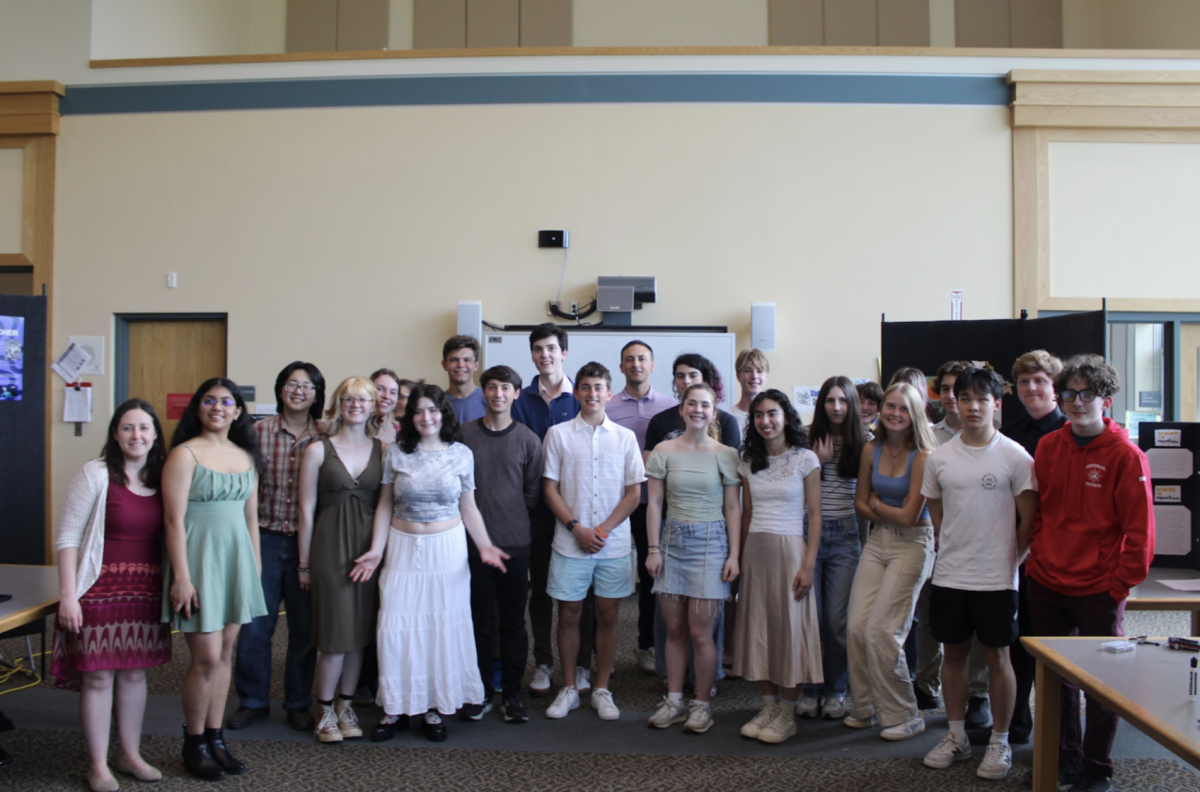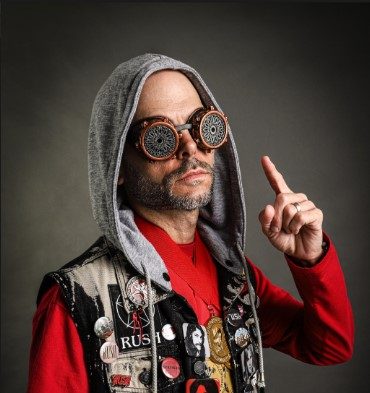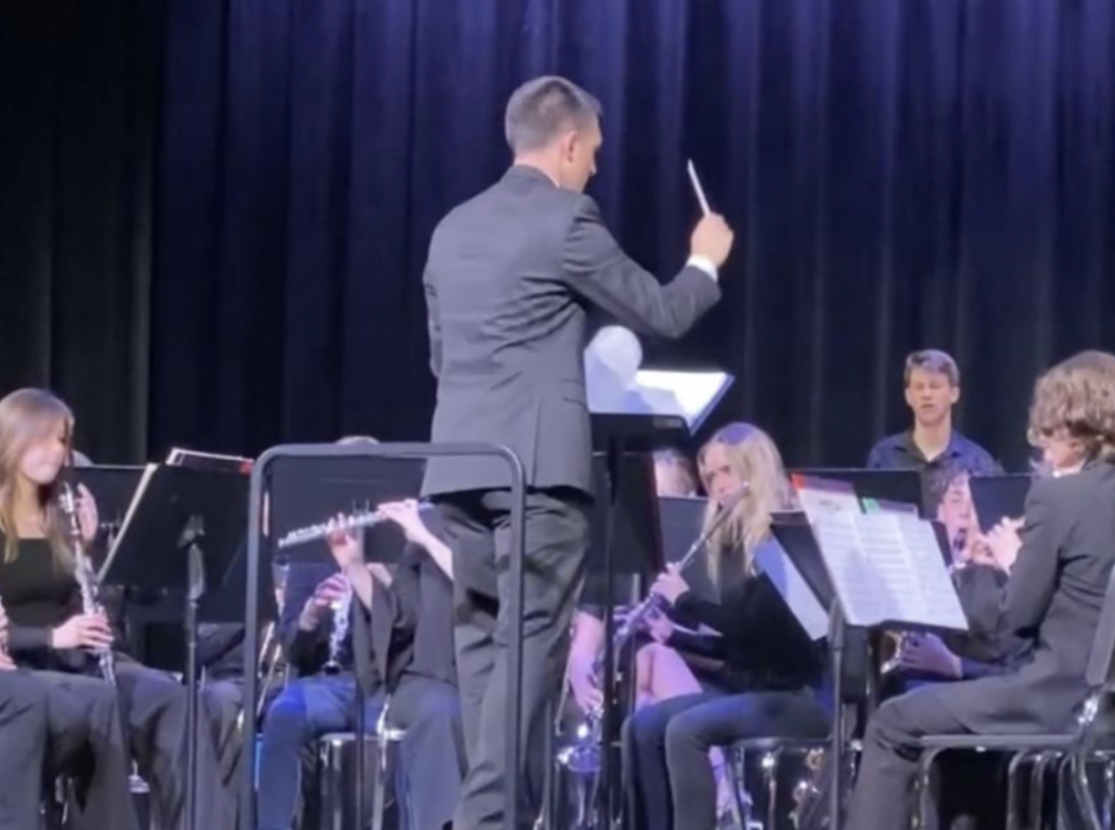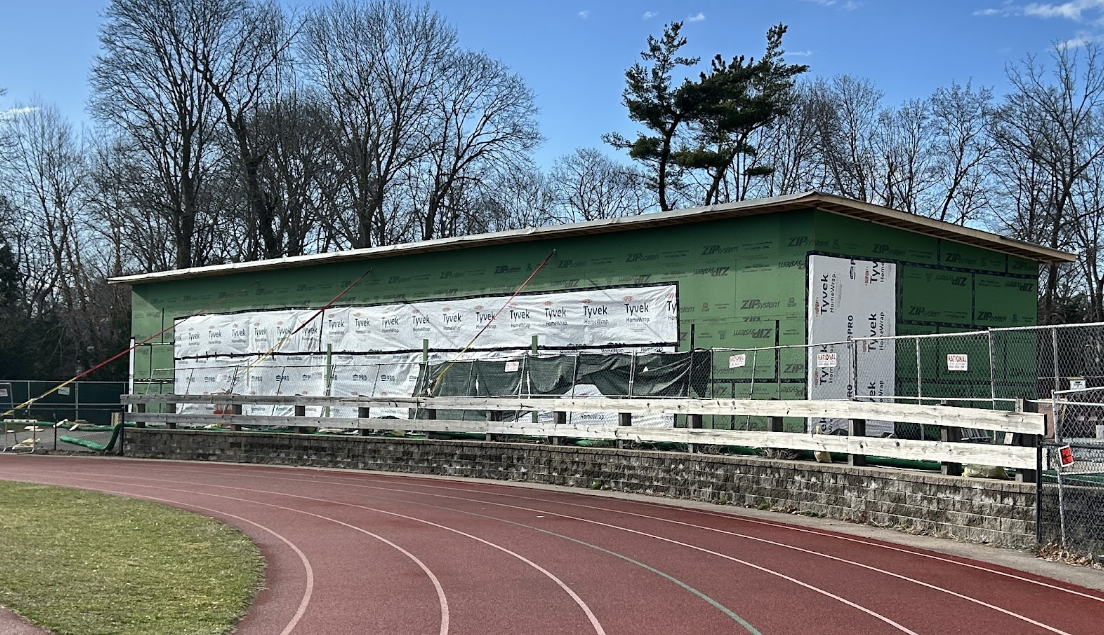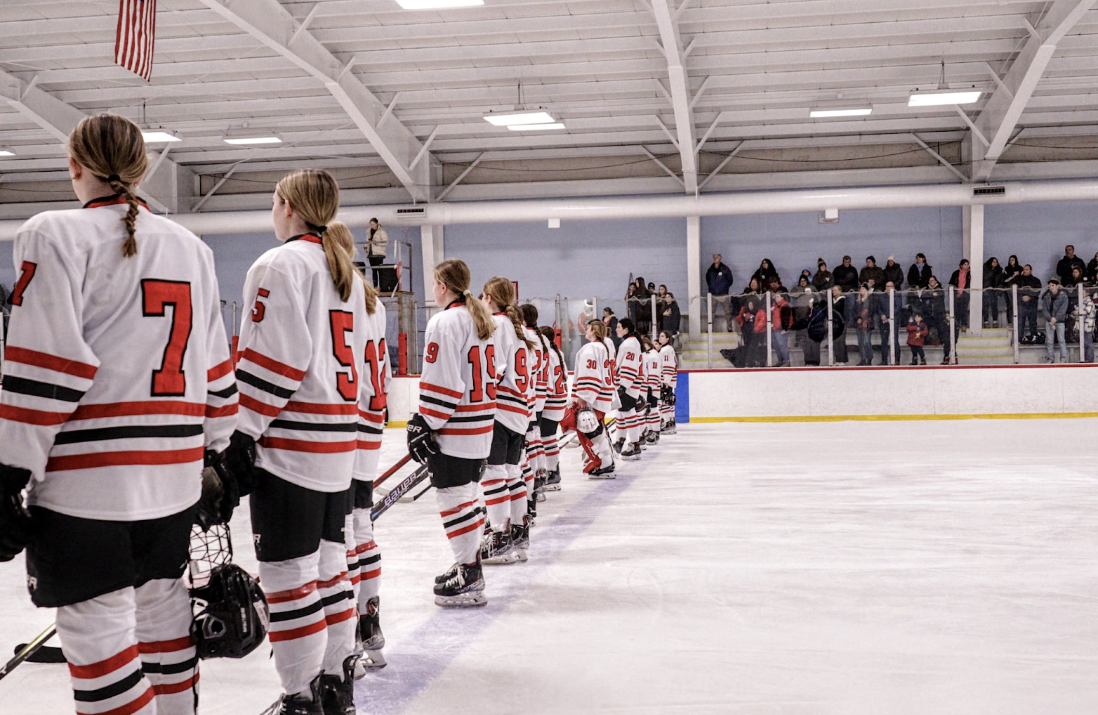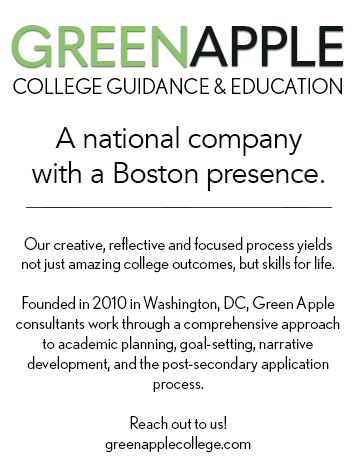Holocaust Survivor Janet Singer Applefield Visits Hingham High School
Mr. Louchheim, Judi Bohn, Janet Singer Applefield, and Mrs. McCash smiling after the moving presentation by Applefield.
December 26, 2017
On December 18th, 2017, a limited number of students sat in the Hingham High School auditorium. Together, they gathered in order to experience history firsthand.
All of these students are currently enrolled in a course that focuses primarily on the Holocaust and the events surrounding it. The teachers of this class, Mrs. McCash and Mr. Louchiem, invited a real survivor of the Holocaust to speak to their students so that they could all gather a deeper understanding of what they learn in class.
Mrs. McCash and Mr. Louchheim wanted to leave the event open solely to their students in order to ensure a meaningful and intimate experience for everyone involved.
Once everyone sat down at the forefront of the auditorium before a screen projecting a slideshow of photos from the speaker’s life, a woman named Judi Bohn turned and addressed the small crowd before her. Bohn explained that she works for the international educational and professional development non-profit organization Facing History, a group that strives to educate and represent important historical narratives, such as those of Holocaust survivors.
She provoked emotion from the entire audience when, during this introduction, she remarked that the group before her was most likely one of the “last groups of students to have the privilege to speak with an actual Holocaust survivor.” She pointed out that so many of the victims of the Holocaust were either murdered during the war, in the aftermath, or died of other causes by now. But not Janet Singer Applefield, the survivor who sat among these Hingham High students on December 18th.
Janet Singer Applefield prefaced her story by addressing the students before her. She expressed that said students are young and capable of making real change—they are a generation that can be the start a new and better world. As many as 1.5 million children were cruelly murdered during the Holocaust. Applefield was one of the 11% of the children who survived.
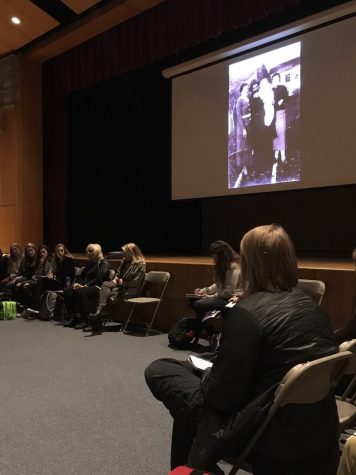
Students listen attentively as Janet Singer Applefield begins to tell her story.
“My hope is that each and every one of us stand up to prejudice,” she expressed, her eyes scanning the room before her.
After these introductions, Applefield began to tell her story, starting with the very beginning. Applefield first reminisced upon her life with her family pre-war. She was quite young, seeing as she was merely 4 years old when the war actually started, but she shared that she remembered happy memories living with her family in the town Nowy Targ of southern Poland before the war began.
She explained that she was born with the name Gustava, and, during her happy memories, that’s what she was called. She ended up changing her name a total of three times before finally having to settle on the safe, Americanized name Janet.
Later in her presentation, Applefield would express the regret she feels for never going back to her birth name. She missed that part of her identity.
When Applefield divulged this information, a silence settled among the crowd as a realization seemed to hit everyone: Applefield certainly survived the Holocaust, but she, as well as every other survivor, did not emerge from the turmoil unscathed. Parts of Applefield were taken and never returned.
Applefield also shared that her physical features, particularly her fair skin and blonde hair, also played a prominent role in her survival. She explained her ability to pass as a typical Aryan child largely decided whether she would live or die. Once again, everyone in the room seemed to really take in the information. The absolute absurdity of someone’s survival depending primarily on physical appearance was a hard concept to not be impacted by.
Applefield continued, saying that the happiness she felt as a child dissipated rather quickly. Soon after WWII commenced, she and her family had to flee to Russia. Applefield recalled her escape in great detail. Why? Well, even at such a young age, Applefield could not possibly ignore nor ever forget the sounds and the feelings of planes shooting down at her and her family from overhead.
Several weeks of terrible travel follow this. Matters did not seem to improve upon reaching Russia, either; there was a dire shortage of food and work. One day, recalled Applefield, an announcement was issued, stating that all able-bodied men in the area should bring shovels to City Hall for work.
Immediately, two of Applefield’s uncles gathered the required supplies and trekked to the City Hall, eager to assist their family in anyway. But what greeted them upon their arrival was no job opportunity.
Instead, these men who came in search of opportunity were forced to march miles upon miles until they came upon a ravine, at which point they were stripped of all their clothes, lined up, and shot into the ravine. Applefield lost her uncles because they tried to provide for her and the rest of her family.
At this point, it became clear to Applefield’s family that Russia did not have what they hoped to find, and they decided to return to Poland in order to protect the property they hoped that they still possessed back there.
However, Applefield’s grandmother, grandfather, aunt, and a remaining uncle of hers chose to stay in Russia. This decision resulted in all four of them being sent to Siberia, an eastern area of Russia with horrific weather and working conditions, to perform slave labor.
Meanwhile, the rest of Applefield’s family returned to Poland only to be forced into a ghetto. Applefield recalled her time spent in such miserable conditions. She remembered plenty—the armbands, the lack of resources, and especially the Gestapo (the secret Nazi police).
“I remember one time the Gestapo came to my apartment,” Applefield told as her audience of both students and teachers alike listened with unwavering attention. “They made everyone undress, naked. They were looking for valuables… they took whatever they wanted.”
Every single day, innocent Jews living in the same ghetto as Applefield were rounded up and ruthlessly murdered. Listening to Applefield’s account of her experiences in the ghetto was striking. Students all across the world read and learn about the Holocaust. Rarely do they have the chance to sit down and be exposed to the emotional side—the human side—of the story rather than just factual side.
But, at Hingham High School, this handful of students was privileged enough to sit before someone who could teach them more about the subject than anyone else. So rarely do students get to genuinely experience the history they read about. But that day, right before their eyes, Hingham High School students listened to a living part of history.
In light of the horrible conditions of the ghetto, Applefield’s parents decided to take the chance and escape. One day, she and her family got dressed without their armbands and just went to the train station. Being caught would mean the most severe of consequences—but it worked.
Until they wound up in another town-turned-ghetto, and needed to escape again.
And again.
Eventually, they couldn’t outrun their cruel reality.
During one attempted escape in August of 1942, Applefield and her family tried to flee a ghetto on horseback. Unfortunately, they were stopped by Polish police. At this point in her story, Applefield turned and posed a question to the audience: “Why would we be afraid of the Polish police?”
Many people associate Nazism and antisemitism solely with Germany during this time, which was simply not the case. “Poland was a very antisemitic country,” explained Applefield.
After being caught, Applefield’s family was once again trapped for no reason other than the fact that they were Jewish. “There was no place to go, no place to hide. No way to escape,” deadpanned Applefield.
Knowing that the chances of survival were slim as the threat of concentration camps loomed closely in the distance, Applefield’s parents were desperate to protect their daughter. Since Applefield was young and could pass as an Aryan child, they decided to send her to live with someone else who could better protect her—someone who wasn’t clearly Jewish like they were.
Thus, Applefield was sent to live with a woman named Maria. Applefield’s family assured her that they would all meet again, but they knew such words were only empty promises. Her family as well as all other Jews during this time were moving targets. They couldn’t make promises because the future was never clear for them.
One day, back in the ghetto where Applefield’s family still resided, a notice was issued for all people within the ghetto to report. The members of Applefield’s family decided to report independently in hopes of increasing their chances of survival. Everyone was congregated in a meadow, forced to stand and sleep there for days on end underneath the sweltering summer sun of 1942.
After days of no explanation, the Gestapo commenced a selection. The Gestapo chose a total of 1,000 men to be used for slave labor. Applefield’s father was one of the thousand men selected. Applefield described her father as “very lucky” in this situation, the same was she described her Aryan appearance. Again, the idea that any Holocaust victim was “lucky” was a heartbreaking concept. In what world is being a slave the luckier of two options? The lesser of two evils?
That was the reality for Jews during this time.
The reason her father was so lucky was because, unlike every other Jew standing in that meadow, he wasn’t given a death sentence. The rest of the people in the meadow that day were forced into completely overcrowded box cars, in which they had no choice but to stand upright in for 5 days straight due to the lack of space. Toxic disinfectant covered the floors.
Many of the Jews forced onto this train suffered through days of miserable travel only to arrive at the concentration camp of Belzec, an annihilation camp used from March 1942 to June 1943. Those who managed to survive the treacherous trip to the camp were tragically sent to the gas chambers upon arrival. There were “only 3 hours from the time they left the train until they were killed,” elaborated Applefield.
Others ended up in Auschwitz, one of the most infamous Nazi concentration camps. The camp was used for both annihilation and forced labor from April 1940 to January 1945. Applefield’s mother, grandmother, cousins, aunts—the list continues—were murdered in this horrific place.
Her father, having been selected for slave labor, was sent to the Kraków ghetto of Poland. Here, he involuntarily worked under terrible, inhumane conditions for a cable company. He kept a picture of Applefield with him at all times.
“The only reason he wanted to live was that he gave me away to survive,” Applefield explained. At that time, her father had nothing in his life to cling onto other than the hope that his daughter was safe from the same fate the rest of his family had met.
Meanwhile, Applefield continued to live a life of hiding and solitude. Everyday, she sat in Maria’s apartment for the entire day. All of the lights were turned out and she was never allowed outside, out of fear of being discovered. Every single day for Applefield consisted of sitting in complete darkness and fearing for her life.
One day, an SSA officer arrived at the apartment, ransacking the entire place in search for any Jews. When asked later, Applefield shared that, out of every terrible moment she endured, this one was the moment that stuck with her the most. As she described this instance, she could include every little detail.
“He looked at me with his chilling blue eyes, turned around, and left,” she spoke with great recollection. “To this day, I remember what he looked like. I remember the sound of his heels clicking as he walked down the steps.”
After this close encounter, Maria decided that she could no longer care for Applefield. Maria worried that the next time an SSA officer arrived, they wouldn’t be able to pass inspection again. Therefore, Applefield was given the birth certificate of a deceased Polish-Catholic girl and sent to live with her 19-year-old cousin.
This cousin may have been family, but she did not treat Applefield as such. She would beat the young Applefield with fireplace pokers. Once, her cousin beat her so viciously that her fingernails turned black and fell off.
“I would cry for my mother. [My cousin] would say, ‘Your mother is dead. She’s never coming back.’”
The only source of light in this dark time for Applefield was her cousin’s neighbor, Yenina. Yenina would bandage Applefield’s many wounds and invite Applefield to play with Yenina’s baby.
Even though Applefield’s cousin treated her worse than Maria did, Applefield wasn’t confined to darkness at all times when living with her cousin. Oftentimes, Applefield’s cousin made her carry boxes to resistance groups, as her cousin was a part of the Polish resistance. Applefield never truly knew what was in those boxes—but they were heavy, and she suspected that they contained weaponry and ammunition for the resistance.
After living out this routine for a bit, one day, Applefield’s cousin took Applefield to town. She brought Applefield to the church in the center, and instructed her not to leave, under any circumstances, until her cousin returned.
Applefield waited for hours upon hours, but her cousin never returned. Eventually, she emerged from the church and proceeded to wander aimlessly through the town center, having no direction to follow. She couldn’t find her cousin anywhere.
She was approached by a woman, who asked why such a young girl was all by herself. Applefield explained that her cousin had left her in the church and never returned. The woman informed her that police had come to the town and arrested everyone in the local café, due to many of the town’s residents’ involvement in the Polish resistance.
Applefield was all alone, once again.
The woman questioned Applefield as to who she was. Heartbreakingly enough, Applefield could not answer this question truthfully, as her life depended on it. “I had a story I practiced to tell if I was ever captured,” Applefield clarified.
The fabricated story checked out with the woman, who then brought Applefield miles away to a farm. Here, she grew rather close to the family that lived there. When the Gestapo showed up one day, Applefield once again escaped its clutches.
During this time, Applefield’s father continued to work in deplorable conditions. One night, in the middle of the night, her father needed to pee. He left his bed and found a pack of cigarettes on his way to the bathroom. He lit one and began smoking, an action that brought disastrous repercussions.
Her father was shot in the face. The bullet fortunately lodged under his cheekbone and stopped its movement there, and he was able to survive. However, the bullet stayed there for the foreseeable future, because he was not provided with any medical treatment whatsoever.
Eventually, Applefield’s luck ran out as well. After essentially becoming a part the family that she lived with on that farm, her cousin’s father turned up and took her away. Although the family had grown rather attached to Applefield and her to them during their time together, they had no choice but to hand her over—he was blood, they were not.
The war was ending. Applefield was only 10 years old. Her cousin’s dad, who obviously knew Applefield’s true identity, turned her over to a Kraków refugee center. Applefield was sent to a room filled with unclaimed children who had survived as well.
Everyday, lists of names of survivors were posted in the center. Everyday, people checked the lists in hopes of seeing the names of loved ones.
One of the people who checked the list everyday was a woman named Lena. Even though the war had ended, picketers stationed themselves out front of center every single day, chanting atrocities like “You should have died!”
Lena wanted to protect the lost and alone children in the center, so she established orphanages for them to live in. Polish hospitals would not treat or take care of any Jewish children, so it was left to kind-hearted people like Lena. The younger child survivors like Applefield were sent to live in the orphanages created by Lena. The older child survivors were put directly into public schools, where they were constantly bullied and tormented both physically and mentally.
Life at the orphanages wasn’t perfect, either. At midnight on one night, Polish men came and attacked the home with guns and fire. These men were so deeply antisemitic that they actively attempted to cold-bloodedly murder orphaned children. The war and the Holocaust may have come to an end, but the destructive presence of antisemitism had not ceased to exist. The laws may have changed, but the ideologies of the people had not. Applefield’s life was still constantly on the line solely because she was Jewish.
Applefield lived in the orphanage for awhile, making friends with the other children there. She had no family and no home to return to.
Lena still checked the list of survivors at the refugee center every single day. One day, when she reached the refugee center, she came across a man who was asking for his daughter. That daughter was none other than Applefield. Her father had survived his years of treacherous, unforgiving slave labor, and he’d found his only reason to live.
What should have been a joyous occasion became yet another thing ruined by the Holocaust. “I will always remember the reunion with my dad… I was so afraid of him,” Applefield shared sadly. “He looked like a skeleton.”
Applefield didn’t even want to leave with her father at first. She was young and had underwent far too much change in her short years. She didn’t want to leave Lena and the friends she made at the orphanage. She didn’t want to abandon yet another family, yet another life that she’d built for herself.
However, her father was her father, so she went with him. The two of them went to live above her grandfather’s store. Death threats became common place for them. Her father began to sleep each night with a gun by his side. It quickly became apparent that a place they could once call home was far too dangerous for them.
The pair left and returned to Kraków once more. Here, they reunited with Applefield’s grandfather, aunt, and uncle who had been in Siberia for the duration of the war. The three of them had survived the tolling labor, but, unfortunately, her grandmother had lost her life. Once a large and happy group of people, Applefield’s entire family had been reduced to five survivors.
The five of them soon realized that there was no future for them in Kraków. They had no money, no property, and no safety, living among those who wanted them dead. Applefield’s father asked her where she wanted to go: Palestine or the USA?
Applefield immediately answered with the USA. “I heard that money grew on trees!” she added with a laugh.
It took an entire 2 years for Applefield and her family to obtain the necessary papers for immigration. Finally, on March 25, 1947, Applefield arrived in New York Harbor. She had already experienced a lifetime of pain, but at this point, she was merely 11 years old, approaching her 12th birthday.
Applefield attended public schooling once she reached America. Her uncle took her to the school office to enroll. As they stood in the office, her uncle turned to her and said, “Choose a name.”
Applefield and her family were officially no longer receiving death threats, but the stigma against them still stood strong. Applefield needed to adopt an American name if she wanted to lead a safe life. In that moment, Applefield chose her third and final name.
Since the entirety of her childhood thus far had been spent either in hiding or on the run in eastern Europe, Applefield spoke, “I had never been to school… I didn’t speak any English.”
After 90 days of living in America, Applefield’s father needed to find an American wife or else she and her family would need to go to Venezuela, the final destination indicated by their papers. Applefield’s family searched adamantly before finally finding a woman for Applefield’s father to marry. But this woman wanted nothing to do with Applefield and her family’s past, so it was never spoken of. Applefield remarked that it took her, as well as most other Holocaust survivors, decades until they felt comfortable speaking about their pasts.
The battle to stay in America was won, but American life wasn’t everything Applefield had dreamt. Money certainly didn’t grow on trees, and Applefield was still treated like an outsider. Her teacher called her “little foreign girl.”
“I always tried to fit in,” Applefield stressed. She wanted nothing more than to get along with the rest of the students and to feel like a normal kid, something she never had the chance to experience.
Despite the struggles she faced, Applefield eventually made it to college. She married at age 19 due to societal pressures. “I don’t recommend it,” she advised playfully, eliciting laughs from the audience.
Soon after, she had her first child, whom she carried with her to class every single day. She stopped at nothing to achieve dreams that once seemed completely impossible for her. With this education, Applefield pursued a career in social work. She always knew she wanted to help other people, even though so many people she had come upon over the course of her life had failed her.
“I had a burning desire to understand human nature,” Applefield told the group. Judi Bohn, the woman who accompanied Applefield, also spoke on this subject, adding that many survivors like Applefield went into careers based on helping others.
Applefield, a now proudly Jewish woman, revealed to the audience that following her experiences she was ashamed to be Jewish for quite awhile. The entire world had supported an idea that Jewish people were bad and that they should be dead—it’s hard not to internalize that type of widespread bigotry.
Bohn chimed in, elaborating on the internal issues faced by Jews in regards to their identities in the aftermath of the Holocaust. Many Jews struggled to appreciate their religion and ethnicity when they’d lost so much. Bohn described the ways in which Jews felt during this time,“It was like, where was God?’”
But, today, Applefield is proud of her heritage and her strength. She started to tell her story to others in the 80s but she did so very slowly, as the idea of opening up about something so emotional was still quite scary.
As she feared, sometimes being open about her past led her to encounter rude and undeserved backlash. Over the years, Applefield has come face to face with people telling her to “get over it” and Holocaust deniers telling her it never even happened. The entire audience was visibly upset by the cruelty that is someone telling Applefield that the trauma she endured never even occurred.
“I was in so much pain, because I didn’t know how to handle it,” Applefield spoke of those who reacted negatively to her past. But, ultimately, a friend of Applefield convinced her that not telling her story was a mistake. This friend showed Applefield that her perspective was far too valuable and far too impactful to not be shared.
Since making the decision to speak on her experience, Applefield expressed that she feels she has become more independent and more passionate about telling her story in order to make a difference.
“I am a witness to history,” elaborated Applefield about why she feels so strongly about sharing her story. “Because you heard me speak today, you are all witnesses.”
In the aftermath of tragedy, everyone is always quick to say “never again.” Why is that “never again” has become a vow taken so frequently, but rarely upheld? Maybe it’s because those that say “never again” neglect to realize that the conflict at hand never truly reached its end. “Never again” is a promise made to be broken when the problem it stems from goes unsolved. It seems that, more and more, antisemitism is an unsolved problem.
“Antisemitism has doubled in the last year,” Bohn informed the audience. “I feel very affected. I feel like people may be losing their civil rights.”
Quite recently, on the very day of Janet Singer Applefield’s visit to be exact, a Hingham High student made the conscious and disgraceful decision to draw a swastika on the walls of the boys’ bathroom. This student contributed to the hatred that enabled the rise in antisemitism back during WWII and the increase occurring today.
“The swastika drawing is a direct attack on any and all Jewish students at our school. No matter how it was intended, the drawing was a hate crime,” said junior Rachel Ader, a Jewish student at Hingham High School.
This swastika represents the inexcusably cruel agenda of Nazism. The swastika embodies the very evil innocent Jews like Applefield were unrightfully subjected to simply because of who they are. This is not okay. It is not acceptable.
“I believe that learning about the Holocaust sooner in school is really the only effective way to educate students on how problematic this act was. It personally does not make sense to me why we don’t learn about the Holocaust until tenth grade,” Ader continued. “The Holocaust was a systematic attempt to annihilate an entire group of people solely based on their religion. 6 million people died in this horrific attack on humanity. [It’s] never something to joke about.”
”I think it’s really disappointing that someone at our school could be so ignorant,” agreed sophomore Sam Raphaelson, another Jewish student at HHS. “[Especially] when Hingham tries so hard to educate everyone.”
But, now, Hingham High School is a witness to history. The students who sat in the auditorium that day took strides to better understand and contribute to an accepting environment. This school and the people within it have the legitimate power to make sure that tragedies like the Holocaust truly never happen again.
This school is better than a swastika drawn on the bathroom wall. This school is a place that Janet Singer Applefield felt comfortable walking into on the afternoon of December 18th. It is the duty of this school and everyone within it to make sure that people like Applefield always feel accepted and safe here.
Today, Applefield is a happily divorced woman with three children and five grandchildren whom she loves dearly. “When I am no longer here, I know my legacy will live on,” Applefield spoke to the crowd before her, smiling widely.
“My children will tell my story. Will you?” she asked, gazing upon the faces before her.
The answer was a resounding “Yes.”
As Applefield listened to the affirmative response, she smiled and nodded her head. “That’s a gift,” she informed the crowd.
“I was humbled by Janet’s strength and determination to tell her survival story and share with us the difficult choices her family made during the Holocaust,” began Mrs. McCash, one of the two teachers of the course that invited Applefield to come speak. “Her only request was to continue to tell and share her story with others – I know the students and faculty at HHS will be honored to do so.”
This school is not only capable of doing better but, for the most part, it wants to do better. And it can do better. This school can contribute to a world where “never again” is no longer an empty promise.






